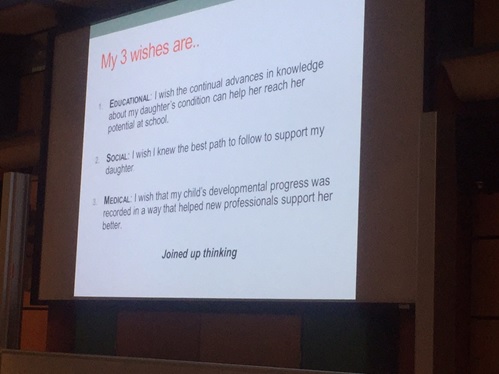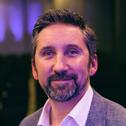Tackling the rare disease conundrum with passion, innovation and investment

The first Cambridge Rare Disease Summit brought all stakeholders together to discuss the key issues and, in doing so, presented a microcosm of the challenges faced in every disease area; combining passion, innovation and investment to find effective treatments.
There are very many good conferences throughout the year, covering all aspects of healthcare and the pharmaceutical industry's role within it. But the ones that really catch my attention are the small but growing number that bring all the stakeholders together in one room, because this is where the really interesting conversations take place.
The rare disease space is a beacon for such collaboration, so it was no surprise that last week's newly-launched Cambridge Rare Disease Summit 2015 reflected this, by involving patients, researchers, supportive organisations, the industry and funding bodies. The event is the brainchild of the equally new Cambridge Rare Disease Network (CRDN), launched in April 2015, which boasts some impressive experience among its founding members.
Delivery of better outcomes to patients with rare diseases faces exactly the same challenges as more common ailments, but the scale of these challenges is magnified in equal proportion to the rarity of the specific condition. The solution necessitates a combination of three critical factors, all of which were abundantly visible at the Summit – passion, innovation and investment.
"The ones that really catch my attention are a small but growing number that bring all the stakeholders together in one room"
Passion
The level of passion for making a difference among all those working in rare diseases is incredible, but it is no doubt led by the patients and their families themselves, each with their own unique story. But it is the ability for these individuals to truly empower themselves and cross the bridge from patient/carer to researcher, communicator and innovator that never ceases to amaze me.
Take the example of Matt Might, for example, whose response to his son's initially undiagnosed condition was to secure funding for his entire genome sequencing and identify a completely new rare disease cause by a mutation in the NGLY1 gene. Since then, he has built a global community (NGLY1.org), which has so far identified 39 patients around the world, accepted a Visiting Professorship at Harvard Medical School and is now actively leading the race to find a drug that can be used as an effective treatment.
His opening keynote set the tone for the entire day and his experience is reflective of many others who are taking the same proactive steps and not waiting for others to bring the medicine to them. Nick Sireau, one of the CRDN founders and Chairman of the AKU Society and Findacure, is another good example in the work he has done to identify a treatment for his two sons, who have alkaptonuria (AKU), also known as black bone disease.
Innovation
Such passion needs to be combined with innovation to help find solutions to the problems that rare disease patients and their families face. Innovation comes in many forms, but drug development is at the core of it and the Summit featured several notable scientific researchers sharing their experiences.
"Innovation comes in many forms, but drug development is at the core of it"
Professor Sir Greg Winter, cofounder of Cambridge Antibody Technology and local to Cambridge as Master of Trinity College, explained the science of synthetic antibodies and their critical role in treating diseases where the genetic pathways are well understood, including their developing application in rare diseases. His current focus is on bicyclic small peptides, which could hold the same therapeutic potential as antibodies, while being able to permeate cells more easily owing to their small size and being cheaper to produce. A later speech by Professor Steve Jackson, also locally based with his work at The Gurdon Institute, presented equally dazzling science into the mechanisms of DNA-repair pathways. Although early application has been in cancer treatment (Jackson was a founder of KuDOS Pharmaceuticals, which developed olaparib and was later acquired by AstraZeneca), the potential is much broader and his work touches on rare diseases such as ataxia.

The '3 wishes' of rare disease parent Sue Berry
Innovation also comes in how the rare disease community is connected to help elevate disease awareness and aid in bringing such great science to patients. Eurordis, the 'voice of rare disease patients in Europe' has been at the forefront of activities here and clearly has ambitions to expand into a more global role. Denis Costello, RareConnect Project Leader, provided a sneak preview of what the new RareConnect.org information platform will look like, which appears to be very much like a Google for rare diseases, including translation into multiple languages. With launch anticipated in the next couple of months, watch this space!
Investment
But the harsh reality for rare disease patients, as with all others, is that such passion and innovation is impossible to translate into front-line treatment without sufficient funding. Although some recent success stories, such as Alexion's Soliris (eculizumab, for the treatment of paroxysmal nocturnal hemoglobinuria) are encouraging more commercial investment from biopharma companies, the rare disease space is still seen as commercially risky, due to the combination of R&D costs, low patient numbers and increasing payer scrutiny of high drug prices.
"Passion and innovation is impossible to translate into front-line treatment without sufficient funding"
So one topic for the day was the idea of 'repurposing' – taking existing drugs for more common conditions and securing approval for them to be used as a rare disease therapeutic. This has been a core focus for the work of the aforementioned champions like Matt Might, but more systematic initiatives are now underway with platforms like www.cureaccelerator.org. Dr Bruce Bloom, President of Cures Within Reach, the organisation behind Cure Accelerator, also outlined how they are trying to work with the generics industry as a whole to support drug repurposing.
While charities such as MRC Technology are working tirelessly to help fund the transition from research to treatment and there is a sense that more funding is flowing in the direction of this area (something also covered by Professor Steve Jackson), there is a clear need to explore novel funding mechanisms. This was covered during an interesting session on 'alternative funding strategies', which included crowdfunding and the growing area of impact investing, where investment is made not just on the basis of expected return financially, but also what ethical impact the work will have. Could we see 'social investment bonds' help drive future rare disease research?
Ultimately, it is clear that the involvement of commercial companies in rare diseases is critical to accelerate the race to find cures. Financial incentives are part of the solution here, but also needed is the realisation that a rare disease indication can provide a good 'foothold' for approval as a precursor to approval in a broader range of indications. In addition, the experience gained from working in the microcosm of rare diseases could also have much broader benefits, as personalised medicine holds the potential to ultimately segment common conditions into clusters of rare diseases.
A closing video keynote from none other than Professor Stephen Hawking reminded us all of the importance of continued activity in tackling the challenges of rare diseases. Hawking, who was diagnosed at a young age with amyotrophic lateral sclerosis (ALS), a motor neurone disease, has defied the odds in staying alive, but how many brilliant minds have been lost too early under similar circumstances? I would challenge any health economist to calculate the benefits of investing in rare disease treatment in that context.
"I would challenge any health economist to calculate the benefits of investing in rare disease treatment in that context"
Passion, innovation and investment were present in abundance at the Cambridge Rare Disease Summit, but for rare disease patients these are very common areas of focus every day of the year. As Sue Berry, the parent of a child with a rare disease, reminded us towards the end of the day, they also require 'joined-up thinking' across all stakeholders to be effective.
I, for one, cannot wait to see where passion, innovation, investment – and collaboration – have taken us by the time of next year's event.
Visit the Cambridge Rare Disease Network website for more information on its work
About the author:
Paul Tunnah is CEO & Founder of pharmaphorum media, which drives better communication and collaboration between the pharmaceutical industry and other healthcare stakeholders. Today, the group encompasses both the digital thought leadership publication, www.pharmaphorum.com, and pharmaphorum connect (www.pharmaphorumconnect.com), the trusted healthcare media consultancy, which helps clients tell a clear, engaging story that connects with the right audiences and influencers using pharmaphorum's global healthcare networks. Dr Tunnah holds a BA in Biochemistry and DPhil in Biological Sciences from Oxford University.
For queries he can be reached through the site contact form or on Twitter @pharmaphorum.
Have your say: What can we all learn from the rare disease space?












